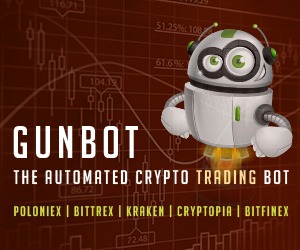Only federated sidechains avoid this centralizing effect on Bitcoin mining because they in no way interact with miners, except by virtue of paying miner fees on transactions pegging coins out of the sidechain.
The Risks Of Pegs And Consensus
The process of how sidechains are mined presents risks to mining centralization and the process of how coins are locked and unlocked from a sidechain peg can present risks to consensus. Federated pegs and one-way pegs do not present a serious risk to consensus. In the case of a federated peg, because it is fundamentally not any different than a custodial exchange — you can deposit to and withdraw from them — it does not have any fundamental interaction with the consensus process that exchanges do and so presents no new risk. One-way pegs are simply a way to burn your bitcoin and make them irrecoverable. This is not a risk or interference in consensus. Softchains and drivechains, however, both in different ways present risks to Bitcoin consensus.
Softchains present a very clear consensus risk to the main Bitcoin network. Firstly it raises the cost of validation per softchain added for mainchain-only nodes, and depending on the size of blocks or complexity of rules to validate this, can be a marginal increase or a quite drastic increase. Secondly, any consensus split due to a non-deterministic bug could affect the mainchain. Such a bug was the cause of the chainsplit that occurred in 2013. Due to how the database Bitcoin uses to handle reading and writing data works, some nodes would “run out of” times they could read and write data and invalidate an otherwise invalid block. Because these operations were limited based on individual computer resources, there was no consistent situation that would cause this, as each individual node’s resources are different.
Such an incident on a softchain presents a consensus risk to the mainchain because of how they are intertwined. Lastly, how the difficulty requirements are defined for mining a softchain can have huge implications for the validation cost of mainchain-only nodes. Any detection of a softchain chainsplit triggers downloading and validating every block down to the root of that chainsplit, which, depending on the validation costs of a specific softchain, could create a massive validation increase for mainchain nodes. If the mining difficulty is or can even be allowed to be too low of a percentage of the total Bitcoin hash rate, it could become very cheap to attack Bitcoin creating chainsplits on the softchain just to increase mainchain node costs.
Drivechains present a more subtle risk to consensus. As discussed above they do in fact have dynamics like other sidechain designs that create pressure further centralizing mining. This interacts very poorly with the fact that the peg is essentially just miners in total control of the coins in drivechains; a majority of them can effectively do whatever they want with coins locked in drivechains. The safety of all coins on drivechains depends on miners being decentralized enough to make 51% attacks not practical, but at the same time creates pressures that will likely in the long-term increase mining centralization.
If such a dynamic plays out with drivechains and miners steal coins from the peg, there is literally no option for users of that sidechain except a user-activated soft fork (UASF) to invalidate that peg out. This would be a very different dynamic than the last UASF; in 2017 users essentially played a game of chicken where they would have coins on both sides of the fork. Both options were available to people supporting a UASF. In the event of a UASF to stop drivechain theft, users would not have both options available. Only on the UASF side of the fork would they have coins; on the legacy chain they would have nothing. They literally have no incentive to come back to the legacy chain if the UASF fails and results in a chainsplit.
Some even argue that miners should attack certain “bad” sidechains (though it’s not certain what constitutes “bad” in a sidechain). If drivechains were widely adopted, this entire dynamic could fragment the Bitcoin blockchain and dilute its network effect. People victimized by a drivechain theft have every incentive in the world to keep a fork going, as letting it die means they have lost everything.
Wrap Up
It would be remiss of me to not mention federated sidechains in this piece; they do not present direct threats to Bitcoin consensus like other designs, but by their nature are effectively a trusted system. Users of such systems should consider deeply whether the utility offered by such systems are worth the trade off in security model, and whether the federation operating the system is trustworthy enough to hold custody of their funds.
In the end, no currently proposed sidechain design comes close to fulfilling the original promise of sidechains laid out in the original 2014 paper. They all either fail to provide the level of security desired in a pegging mechanism to move between chains or present risks to the main Bitcoin network itself. Maybe one day things like zero-knowledge proofs could provide a way to design a peg that does not impose increased validation costs on mainchain nodes like softchains, or not require new trust assumptions like drivechains or federated chains in terms of the security of users’ funds. But as of now, no such concrete design exists. If you think truly trustless sidechains are an important improvement for Bitcoin, hopefully one day the technology to implement them will be developed, but currently nothing in existence has come close.
This is a guest post by Shinobi. Opinions expressed are entirely their own and do not necessarily reflect those of BTC Inc or Bitcoin Magazine.





